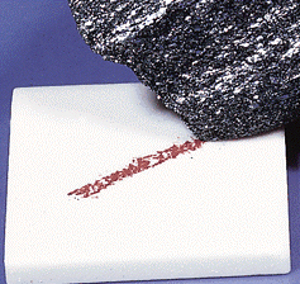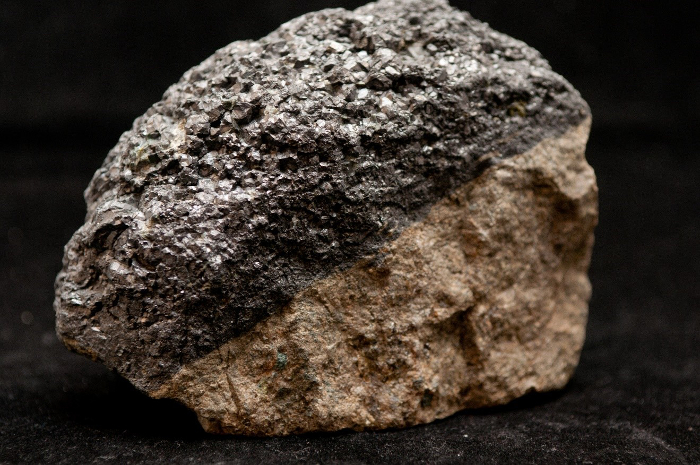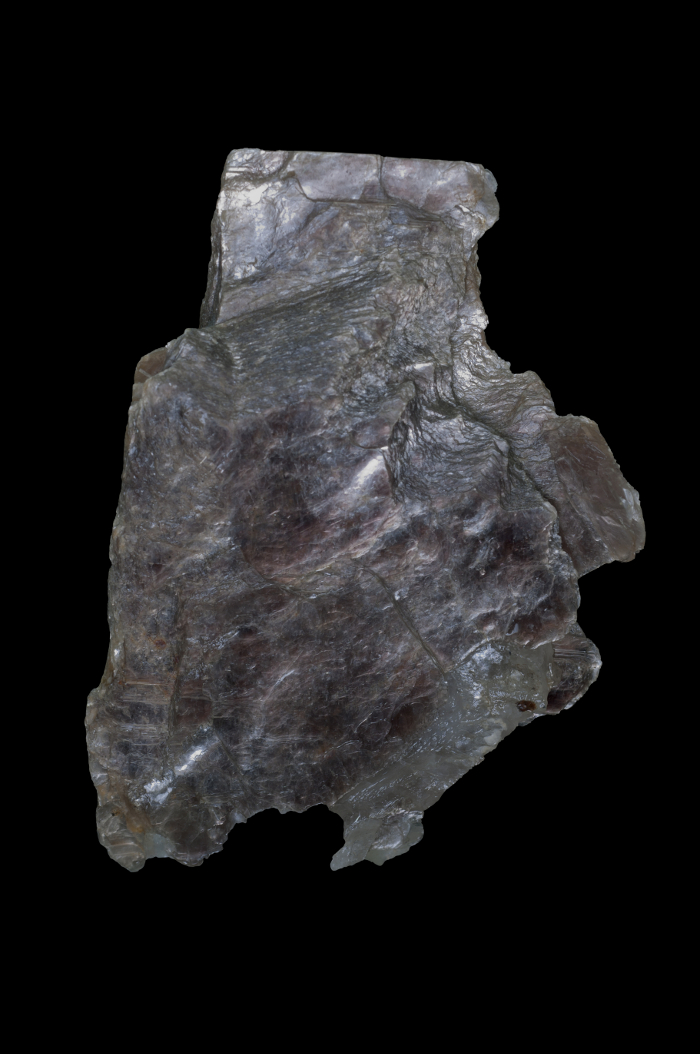Physical Properties Of Minerals II: Polymineralic Analysis
Przegląd
Source: Laboratory of Alan Lester - University of Colorado Boulder
The physical properties of minerals include various measurable and discernible attributes, including color, streak, magnetic properties, hardness, crystal growth form, and crystal cleavage. These properties are mineral-specific, and they are fundamentally related to a particular mineral’s chemical make-up and atomic structure.
This video examines several physical properties that are useful in field and hand sample mineral identification— color, luster, streak, hardness, magnetism, and reaction with acid. Unlike crystal form and crystal cleavage, these properties are somewhat more closely linked to mineral chemical composition than to atomic structure, but both do play a role.
It is important to recognize that rocks are aggregates of mineral grains. Most rocks are polymineralic (multiple kinds of mineral grains) but some are effectively monomineralic (composed of a single mineral). Unlike crystal form and cleavage, which are terms reserved for mineral specimens, geologists might on occasion refer to a rock as having a general sort of color, hardness, magnetism, or reaction with acid. In other words, the physical properties looked at here are potentially appropriate for use with rocks as well as with specific minerals.
Zasady
A single mineral specimen may exhibit very few, if any, key physical properties. For any demonstrations or experiments that address physical properties, it is first necessary to select a suitable group of mineral samples that actually display the key features or properties under investigation. Below, we address the fundamental definitions, in geological context, for the physical properties— color, luster, streak, hardness, magnetism, and reaction with acid.
Color— Color simply refers to the apparent color seen with the naked eye when looking at a mineral. Ultimately, this is a result of wavelengths of light that are preferentially reflected from a mineral surface. (Figure 1)
Streak— Streak is the color of a powdered, i.e. very fine grained, sample of the mineral. This is observed by taking a mineral sample and dragging it across a porcelain plate in order to create a line of powdered material. (Figure 1)
Hardness— Hardness is effectively a mineral’s surface strength, or resistance to disaggregation, i.e. whether or not it can be scratched. A mineral is said to be harder than another mineral if it is capable of scratching the surface of the other mineral. The mineral hardness scale, ranging from 1-10, was developed in the early 19th century by the mineralogist Friedrich Mohs, but based on modern materials science, the scale is not linear. (Figure 2)
Magnetism— Magnetism refers to a mineral’s ability to influence a magnet or compass. In general, this property is exclusive to the mineral magnetite (Figure 3), but other minerals can show weak magnetism (especially after heating), such as hematite and bornite. Ultimately, magnetism is a result of spatial organization of electron spin directions, or moments.
Reaction with Acid— Geologists often test rocks and minerals with dilute acid (almost invariably 2-3% HCl) in order to assess the presence of carbonate compounds. There are numerous carbonate minerals, but the most common are calcite (a key component of the rock limestone), which effervesces vigorously with diluted HCl, and dolomite (a key component of the rock dolomite), which effervesces weakly.
Luster— Luster is a subjective measure of how a mineral surface tends to reflect light. It is divided into two general categories:
- metallic (highly reflective and shiny), as seen in minerals such as pyrite (Figure 4) and galena (Figure 5)
- non-metallic (more dull in appearance), as seen in minerals such as feldspar (Figure 6), quartz (Figure 7), and muscovite (Figure 8).
As luster is a subjective property (perhaps better termed a “quality”), and typically more the concern of gemologists opposed to geologists, the rest of the lesson will focus instead on the properties color, streak, hardness, magnetism, and reaction with acid.

Figure 1. Color, streak, and luster. The mineral hematite is a good example of how bulk color (in this case, silvery-dark) and the color of a powder, which is called “streak” (in this case reddish-orange), can be quite different. Hematite can express different kinds of luster, but here it shows a metallic luster.

Figure 2. Hardness scale. The hardness scale is a way of comparing minerals on the basis of how easily a mineral surface can be disaggregated, i.e. scratched. A mineral that is “harder” will scratch a “softer” mineral.

Figure 3. Magnetite mineral sample. Magnetite is an iron oxide. Although iron is a primary constituent of planet earth, it’s only present in pure elemental form in the remote region of earth’s core (some 2,900 km beneath the surface). In earth’s crust and at the surface, iron is bound with oxygen and hydroxyl groups to form the common minerals magnetite, hematite, and limonite. Magnetite is the most magnetic of all the naturally occurring minerals on earth.

Figure 4. Pyrite. Pyrite is also known as fool’s gold due to its metallic luster and pale brass-yellow hue.

Figure 5. Galena. Galena (sometimes called lead glance) is another example of a mineral with metallic luster. It is the main ore of lead, a source of silver (sometimes containing up to 1-2% silver), and has a low melting point.

Figure 6. Feldspar. Feldspars are a group of rock-forming minerals which comprise up to 60% of the Earth’s crust. They are a good example of a mineral that displays a non-metallic luster.

Figure 7. Quartz. Quartz is another good example of a mineral with non-metallic luster. It is the second most abundant mineral in the Earth’s crust after feldspar.

Figure 8. Muscovite. Commonly known as mica, muscovite is another mineral that displays a non-metallic luster.
Procedura
Preparation
In order to observe and analyze the physical properties of minerals as is done in this video, there are a few preparatory steps that should be taken. First, collect a group of mineral samples. Suggested samples include hematite, magnetite, calcite, dolomite, and galena. Establish a surface for examining the specimens. A clean table-top is suitable, perhaps with a piece of white paper on the table surface. Obtain a porcelain streak plate, a hardness kit, magnet and compass, and dilute HCl (2-5%).
1. Observe and Analyze Color
- Examine a selection of mineral samples and observe apparent color.
- Note whether there is color variation within the sample itself.
- Note whether there is color variation within different samples of the same mineral.
2. Observe and Analyze Streak
- Take a mineral sample and drag it across the streak plate.
- Compare the bulk color of the mineral sample with the streak color that is left on the plate.
- In most cases there will be little difference between the bulk color and the streak color, however a few minerals are notably different, e.g. galena, hematite.
Streak, i.e. the color of powdered microscopic grains, is occasionally different from bulk color, because of reflectivity effects or the limited control of impurities over color at the small-grain scale. - Repeat 2.1-2.3 with other mineral samples
3. Observe and Analyze Hardness
- As an initial step, take each mineral specimen and attempt to scratch the glass plate with it.
- Separate these specimens into those that scratch glass and those that do not.
- Glass plate is near the middle of the Mohs Hardness scale (hardness 5.5). This separates the group into what geologists refer to as generally hard, versus generally soft minerals.
- Within each group (hard minerals, soft minerals) test to see which are harder or softer. This is done by seeing which mineral will scratch another.
4. Observe and Analyze Magnetism
- Easily measurable and identifiable magnetism is restricted to the magnetic group known as ferromagnetism (as opposed to paramagnetism or diagmagnetism, which are very weak and difficult to measure).
- The minerals with which we can assess magnetism are magnetite, and to some extent hematite and bornite.
- Using a masonry nail, flake a few grains of magnetite from the sample.
- See whether the bar magnet (strong ferromagnet) will pick up the grains of the minerals mentioned above, in 4.2.
- See whether any of the minerals above mentioned (4.2) will affect a compass needle.
- Place the mineral sample and the compass side-by-side with about 6 inches of space between them.
- Slowly decrease the space separating the sample and compass by moving each toward the other.
- The needle of the compass should start to point toward the sample, increasingly so as the space separating the compass and the sample is decreased.
5. Observe and Analyze the Reaction with Acid
- Minerals that react with dilute hydrochloric acid are carbonates. Examples being calcite—CaCO3; dolomite—CaMg(CO3)2. These are the primary constituents of the important and common carbonate rocks, limestone and dolomite.
- Take the dropper bottle of dilute HCl and carefully place one to two drops on the surface of the sample.
Note: Although dilute HCl is not particularly dangerous, it’s best not to get the acid on one’s skin (possible rash), or on one’s clothing (possible staining), and after testing, it’s a good idea to wash off the sample. - Note how calcite effervesces vigorously with dilute HCl.
- Take the dolomite sample, and by either dragging it along the porcelain plate or scratching it with the masonry nail, create some powder/flakes.
- Repeat step 5.2 but this time place the dolomite sample (not the powder/flakes) into the HCl.
- Note how dolomite barely reacts with dilute HCl.
- Now place some of the dolomite powder/flakes in the HCl, and note the increased reactivity when powdered.
Wniosek i Podsumowanie
Historically, the evaluation of the physical properties of minerals has been a key first step in mineral identification. Because microscopic and modern analytical instrumentation (e.g. petrographic microscopy, x-ray diffraction, x-ray fluorescence, and electron microprobe techniques) are not available in the field, recognition and use of observed physical properties can be important diagnostic tools.
Evaluating and observing the physical properties of minerals is an excellent means to demonstrate how the macroscopic features of minerals are in fact the external manifestation of either atomic-level structure or chemical composition. This process provides insight into:
1) How chemical composition influences the interplay of light with reflecting surfaces.
2) How chemical composition and atomic bond strengths influence a mineral’s resistance to disaggregation (scratching).
3) How chemical composition and atomic scale ordering influence properties such as magnetics (e.g. presence of Fe-bearing substances) and reaction with dilute acid (e.g. presence of the CO32- anion group).
There are also industrial and engineering applications that require some knowledge of the physical properties discussed in this video. For example, machines that need to cut or grind may use mineral substances to aid in the process. Additionally, gemologists (who typically identify and prepare gem-quality minerals for sale) may be concerned with properties like color and luster.
Przejdź do...
Filmy z tej kolekcji:

Now Playing
Physical Properties Of Minerals II: Polymineralic Analysis
Earth Science
38.0K Wyświetleń

Determining Spatial Orientation of Rock Layers with the Brunton Compass
Earth Science
25.5K Wyświetleń

Using Topographic Maps to Generate Topographic Profiles
Earth Science
32.1K Wyświetleń

Making a Geologic Cross Section
Earth Science
47.0K Wyświetleń

Physical Properties Of Minerals I: Crystals and Cleavage
Earth Science
51.6K Wyświetleń

Igneous Volcanic Rock
Earth Science
39.7K Wyświetleń

Igneous Intrusive Rock
Earth Science
32.3K Wyświetleń

An Overview of bGDGT Biomarker Analysis for Paleoclimatology
Earth Science
5.4K Wyświetleń

An Overview of Alkenone Biomarker Analysis for Paleothermometry
Earth Science
7.2K Wyświetleń

Sonication Extraction of Lipid Biomarkers from Sediment
Earth Science
8.8K Wyświetleń

Soxhlet Extraction of Lipid Biomarkers from Sediment
Earth Science
18.5K Wyświetleń

Extraction of Biomarkers from Sediments - Accelerated Solvent Extraction
Earth Science
9.0K Wyświetleń

Conversion of Fatty Acid Methyl Esters by Saponification for Uk'37 Paleothermometry
Earth Science
10.1K Wyświetleń

Purification of a Total Lipid Extract with Column Chromatography
Earth Science
12.4K Wyświetleń

Removal of Branched and Cyclic Compounds by Urea Adduction for Uk'37 Paleothermometry
Earth Science
6.4K Wyświetleń
Copyright © 2025 MyJoVE Corporation. Wszelkie prawa zastrzeżone